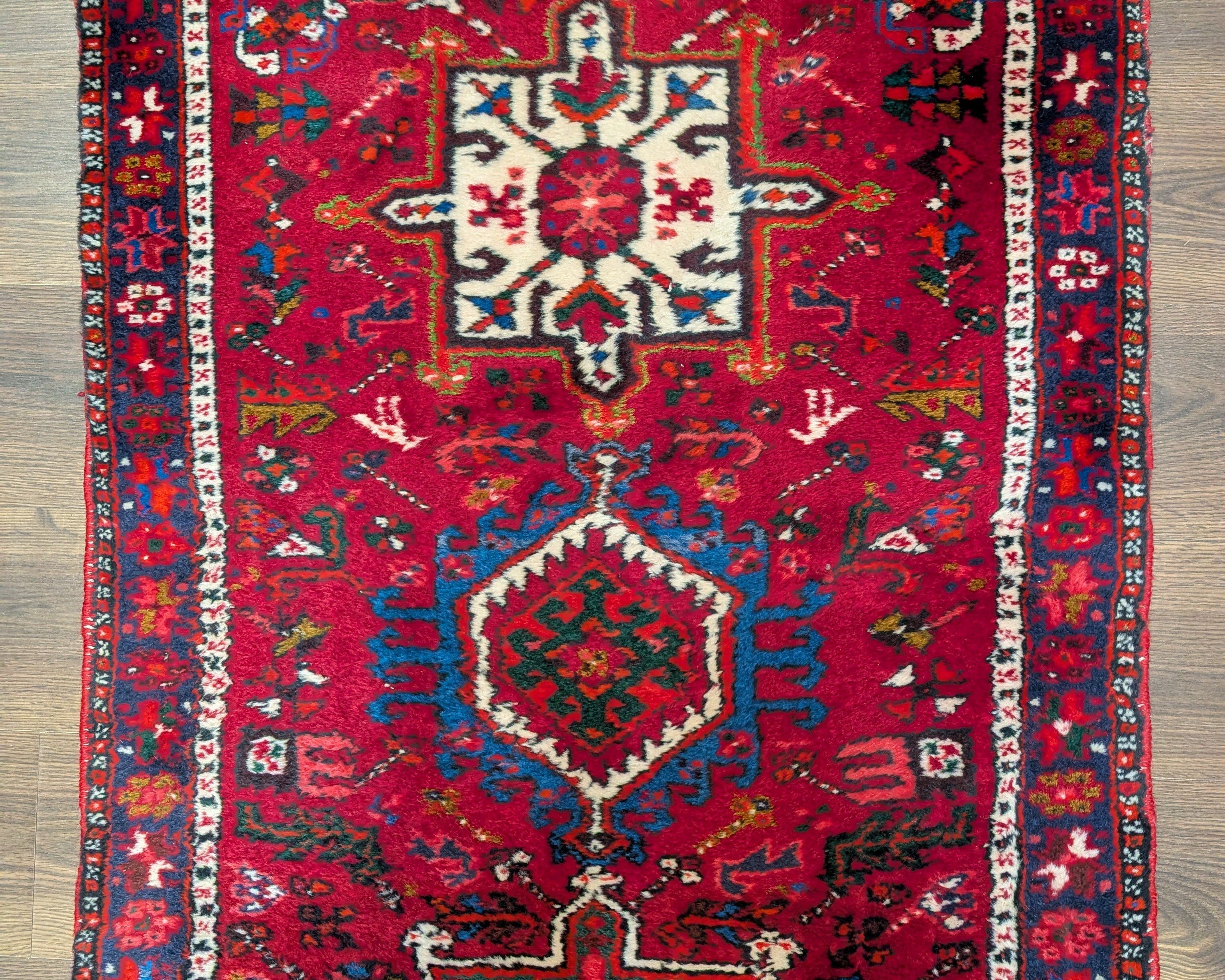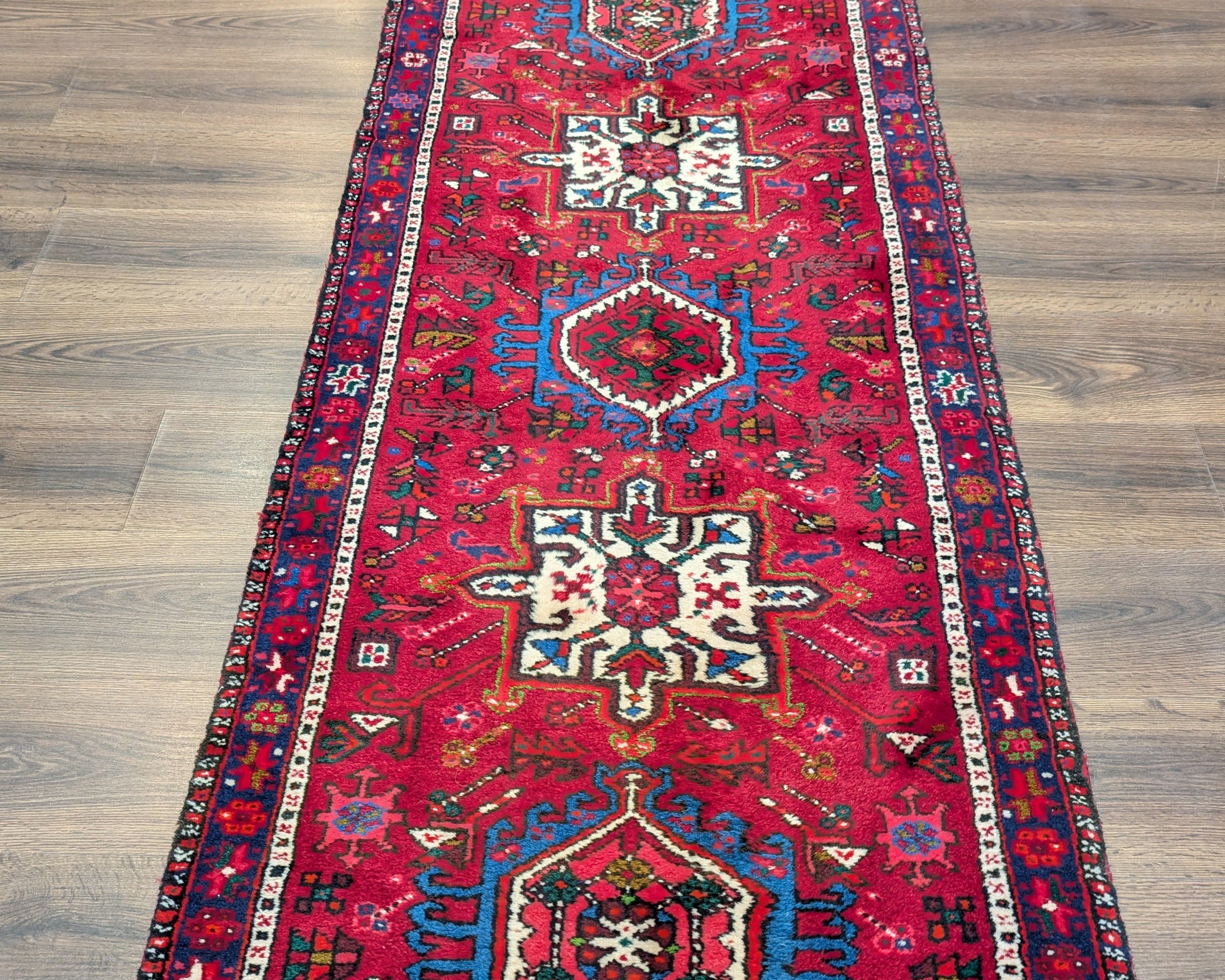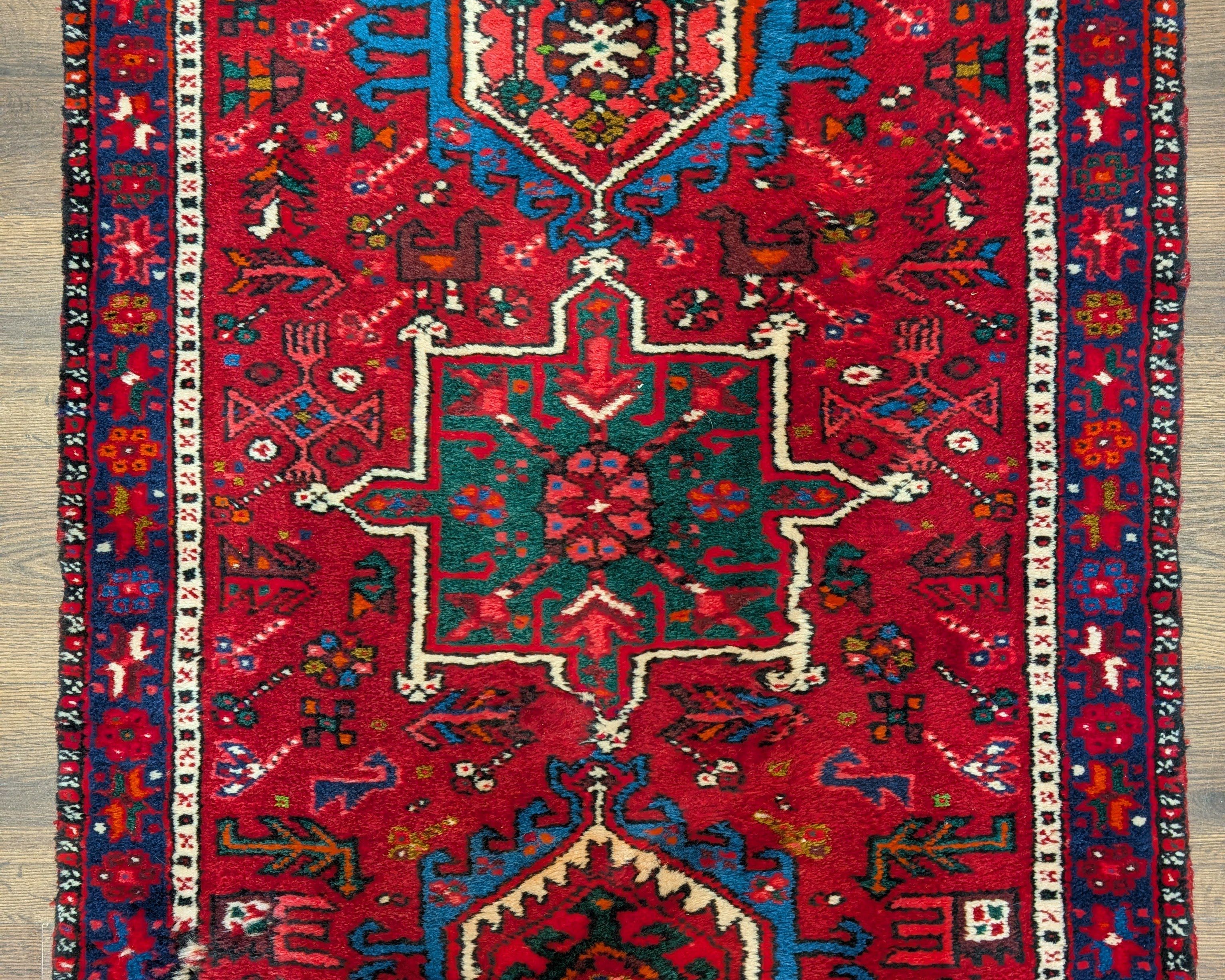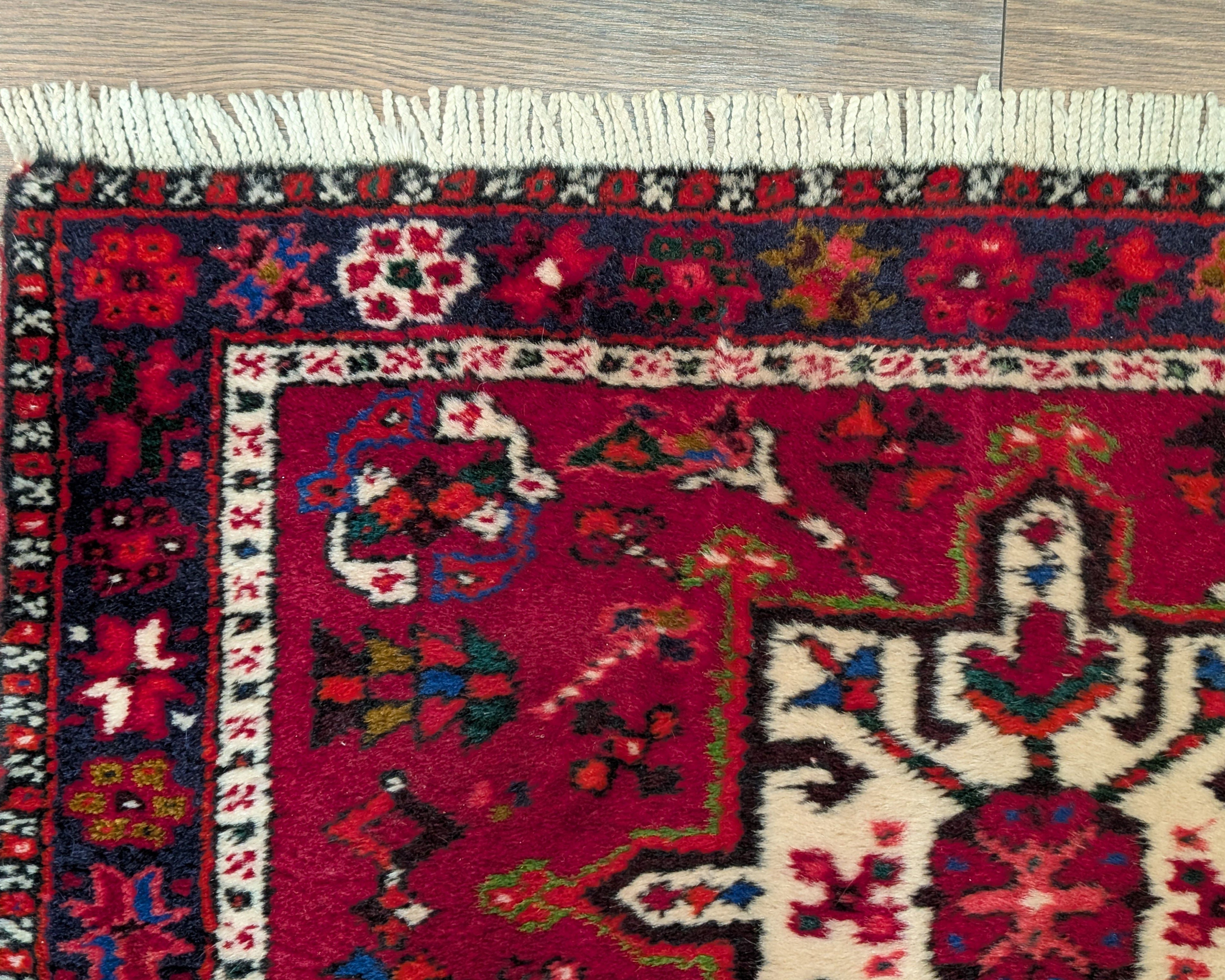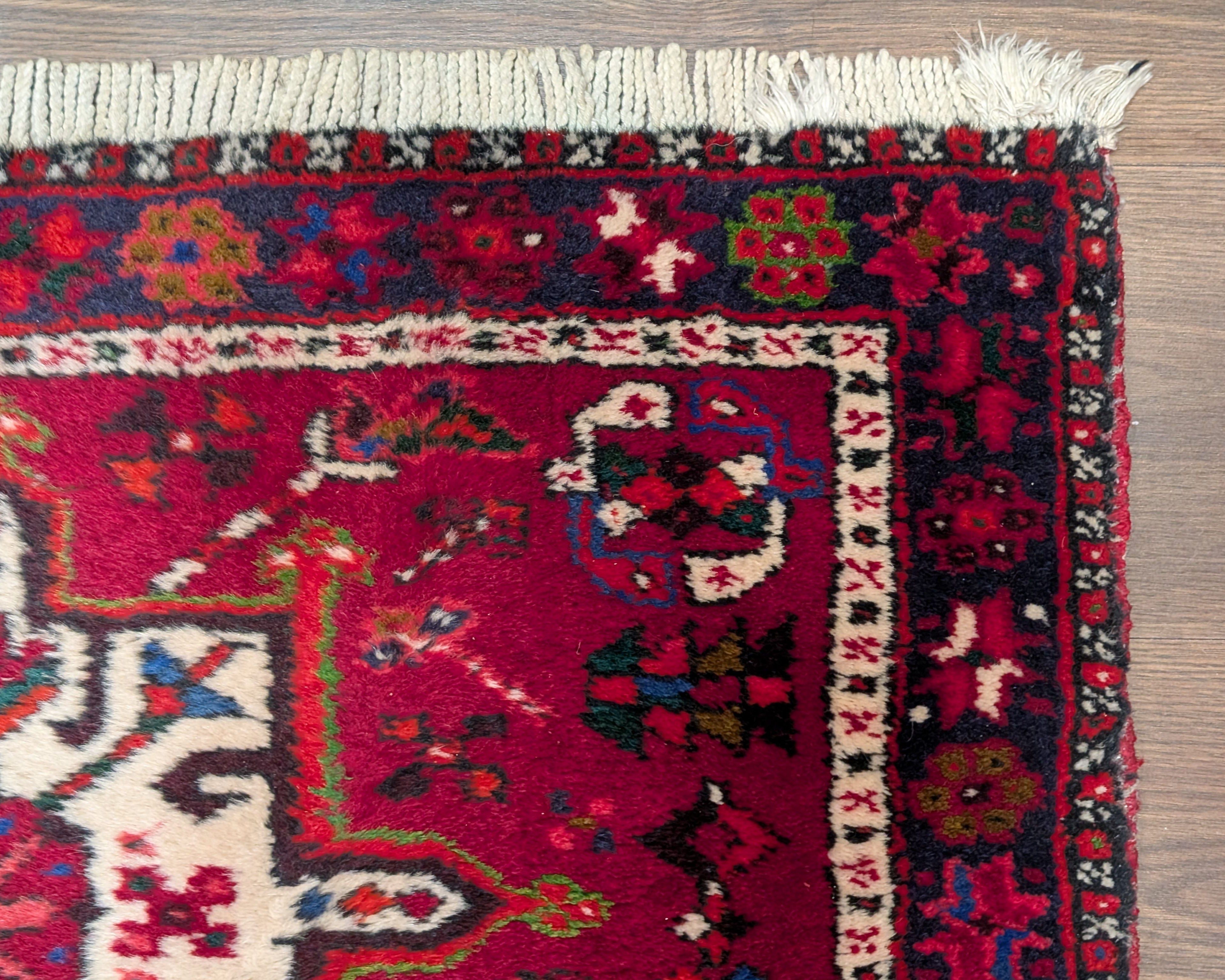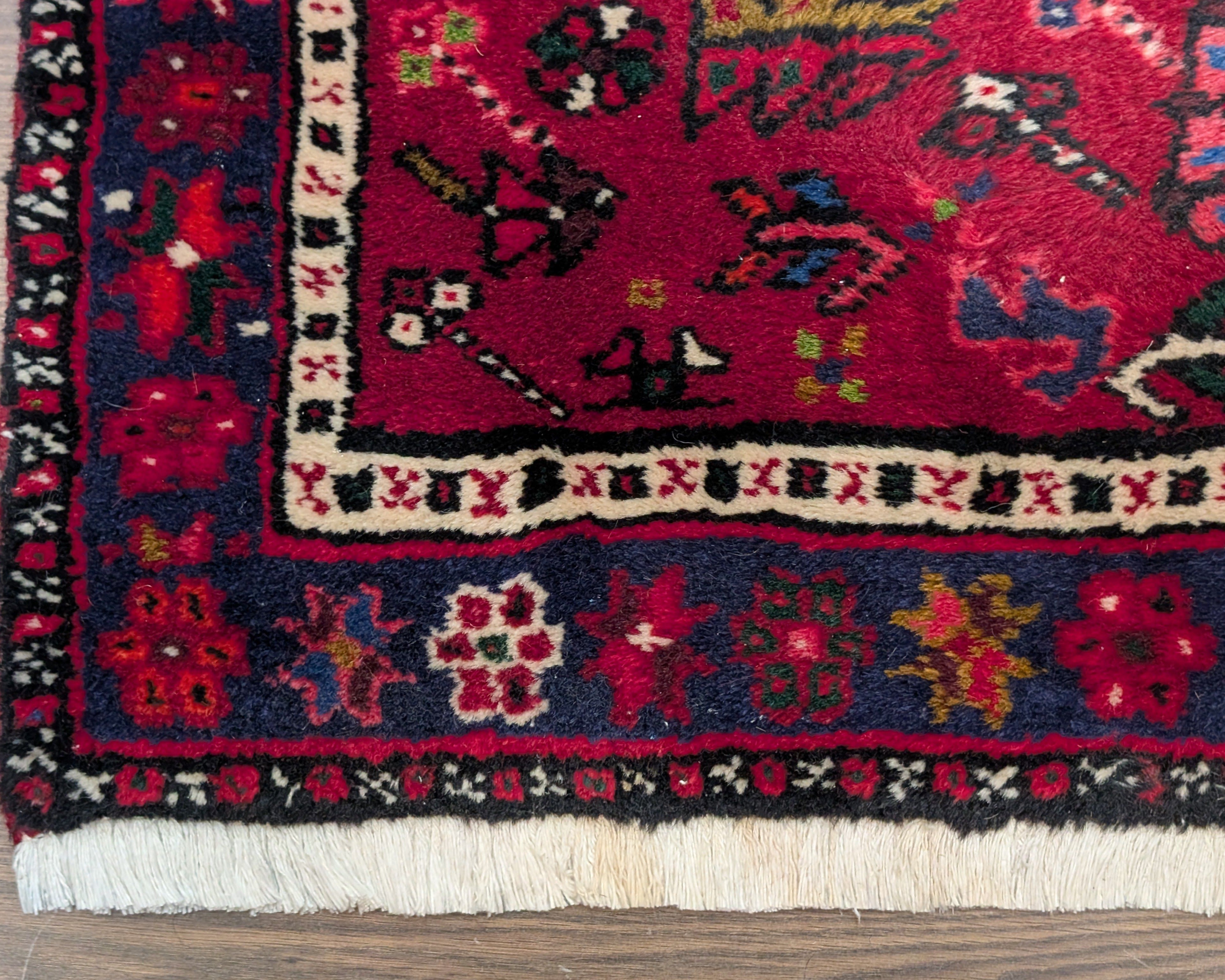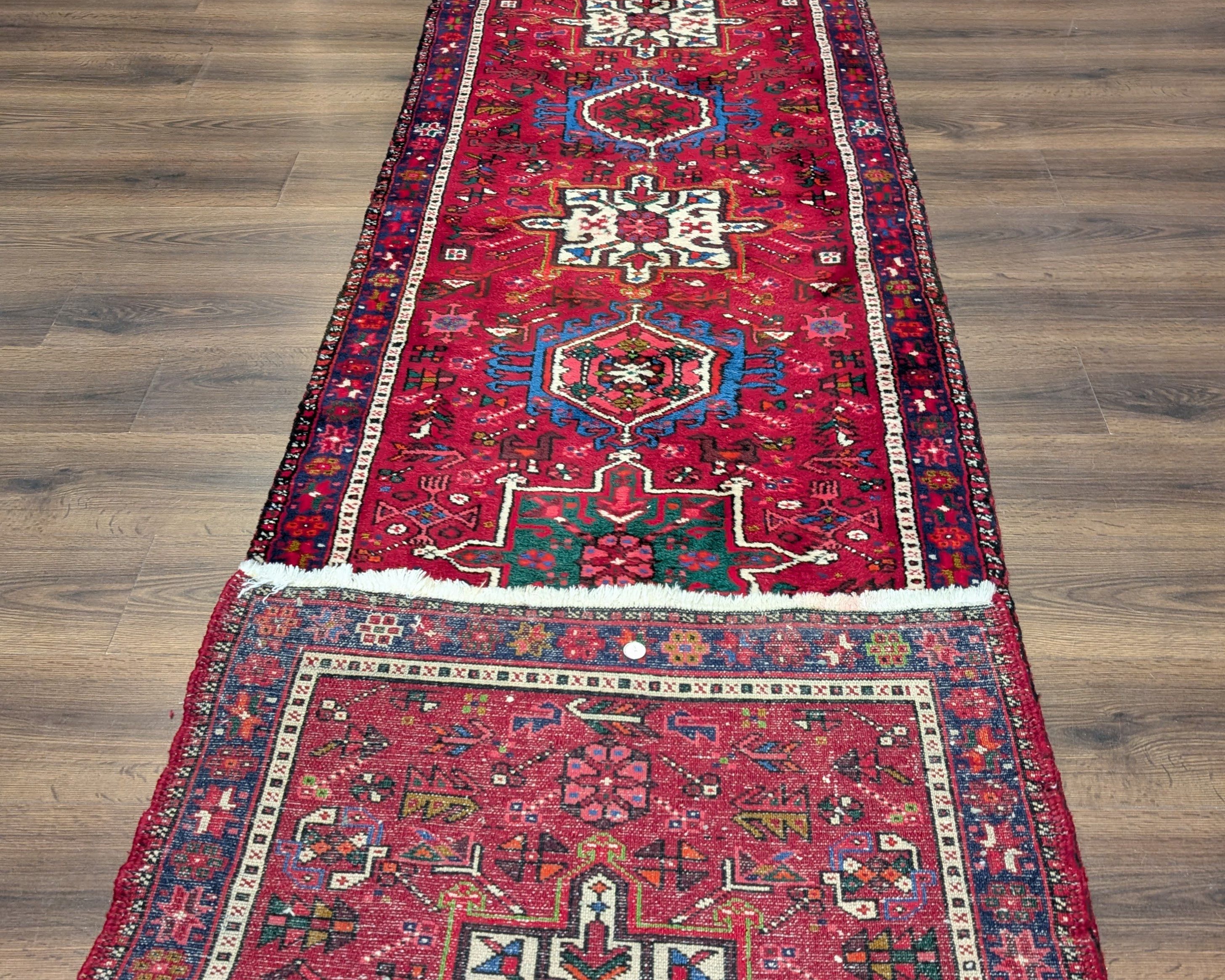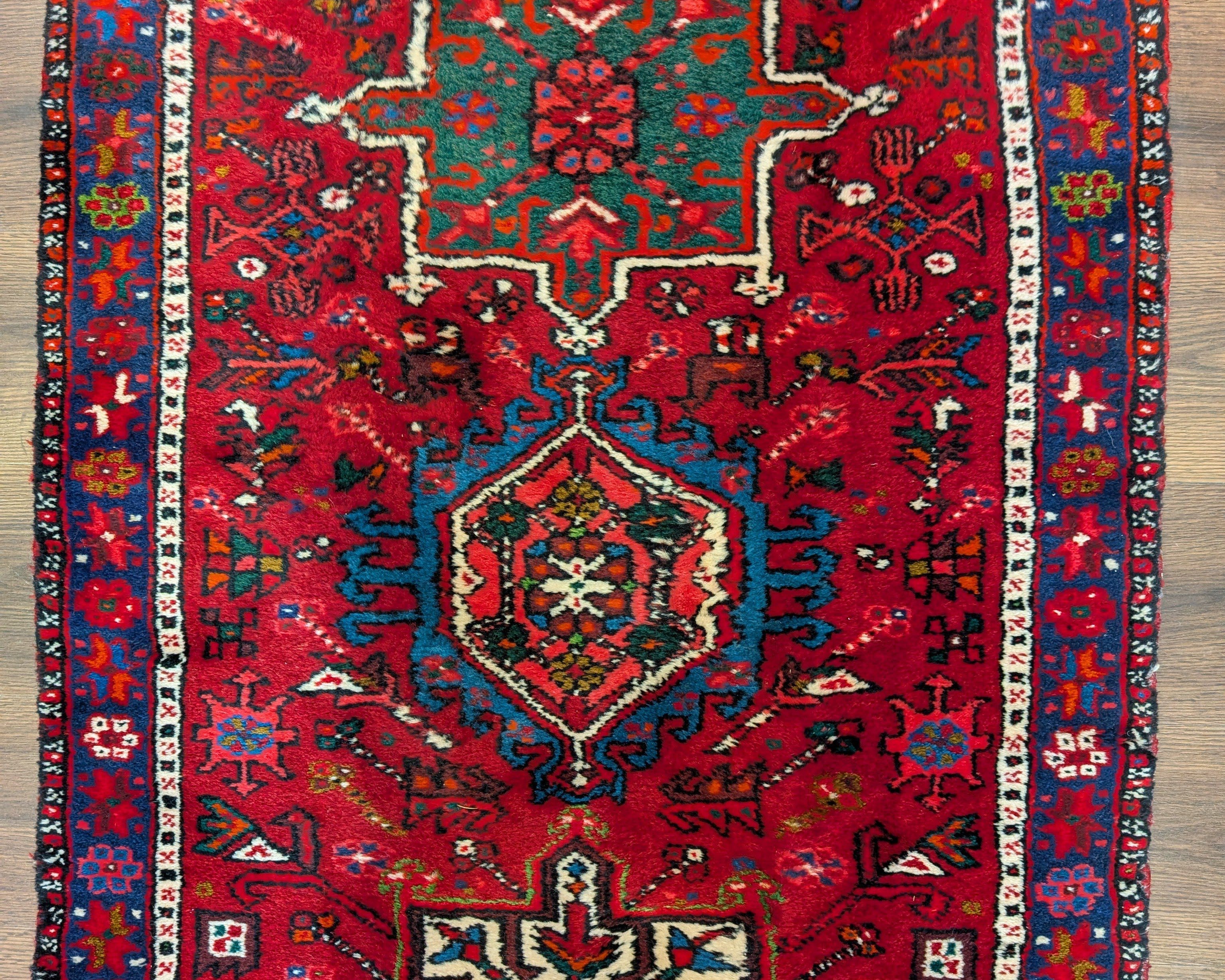About Karajeh Rugs
Karajeh rugs—also spelled Karaja or Gharajeh—hail from a village just northeast of Tabriz, in the Azerbaijan region of northwest Iran. Karajeh rugs share a deep connection in technique, tradition, and regional heritage to Heriz rugs. Karajeh carpets are typically woven by Azerbaijani-speaking artisans on horizontal looms, preserving utilitarian techniques that have been passed down for generations.
Design & Structure
What sets Karajeh rugs apart is their geometric design, often anchored by a series of three stacked medallions—a hallmark of the style. Some feature repeating allover medallion motifs, but most showcase a central row of varied diamond or octagonal shapes. These are framed with stylized flowers, rosettes, and angular leaves in a symmetric, balanced format. Despite their smaller size, the bold composition makes a strong visual impact.
Size and Practical Use
Karajeh rugs are typically more compact than Heriz or Serapi rugs. They were often made as runners or medium-sized carpets, suited for village homes with narrower floor plans. Today, this makes them ideal for modern entryways, hallways, or rooms where a narrower layout is needed.
Material and Weaving Quality
Made from sturdy wool, Karajeh rugs are woven with the Turkish (symmetric) knot. The wool pile is firm and resilient, contributing to their reputation for hard-wearing durability. These rugs were woven for everyday use, not showpieces, and that utilitarian spirit is part of their enduring charm.
Color Palette
Karajeh weavers favor soft earth tones—rust, deep indigo, ivory, khaki, and ochre—punctuated with vivid natural dyes. These colors age beautifully, often softening over time into a rich patina that enhances the geometric motifs.
Relation to Heriz Rugs
Though Karajeh rugs are distinct in design and scale, they share close ties to Heriz rugs. Both emerge from the same broader weaving region and reflect a shared foundation in construction and aesthetic tradition. You can often see similar angular floral motifs, border arrangements, and medallion interpretations—though Heriz rugs tend to be larger and more centralized in design.
FAQs About Karajeh Rugs
Where are Karajeh rugs made?
Karajeh rugs come from the village of Karajeh (or Karaja), located in Iran’s Azerbaijan region near Tabriz. This area is a historic center of weaving, known for producing both Karajeh and Heriz rugs.
What is the design of a typical Karajeh rug?
Most Karajeh rugs feature a geometric triple medallion layout or an allover medallion design. The medallions are often flanked by hooked floral elements, stylized animals, and angular vine motifs.
How do Karajeh rugs differ from Heriz rugs?
Karajeh rugs are generally smaller and more compact, often woven as runners or small area rugs. While Heriz rugs feature a large central medallion, Karajeh rugs use multiple aligned medallions. Both share regional and structural similarities but are distinct in layout and scale.
Are Karajeh rugs durable?
Yes—Karajeh rugs are exceptionally durable, made with tightly knotted wool and designed for daily village life. Their resilience makes them a great choice for high-traffic areas.
What kind of colors are used in Karajeh rugs?
Karajeh rugs are known for their use of natural dyes, including rich reds, indigo blues, tan, ivory, and warm browns. These earthy tones give the rugs warmth and versatility while aging beautifully over time.
What are Karajeh rugs made of?
They are primarily made of wool, both in the pile and the foundation in some cases. The wool is tightly woven with a Turkish knot, resulting in a sturdy and dense weave.

